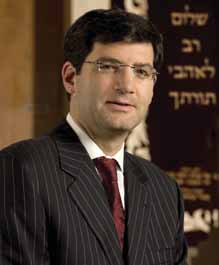Inclusion
I write this just as my sixteen-year-old son is returning from Israel. He was fortunate to participate in one of the OU’s most spectacular programs, Yad B’Yad. Yachad/NJCD (National Jewish Council for Disabilities, an agency of the OU) brought seventy typical high school students to travel the length and breadth of our homeland, literally “hand-in-hand” with young adults who have disabilities. Parents, including myself, who chose this program wanted more than just a fun, inspiring and comprehensive Israel tour and experience for our children; we wanted our kids to become sensitized to the needs of those who might be perceived as being less fortunate than they. We wanted them to appreciate that not everybody has the blessings that they have.
We were wrong.
These are not the only lessons our kids came back with—they came back with so much more.
Yad B’Yad, and Yachad in general, is structured in such a way that all who participate know they are part of one community. Yachad clearly sends the message that we are all peers, and our community simply isn’t complete when we don’t all have a place and something to contribute.
Our kids who went on Yad B’Yad did become more sensitive people—not because of what they did for the Yachad participants, but because of what the Yachad participants did for them. They amazed them with their talents. One wheelchair-bound Yachad member is a “sit-down” comic; another is familiar with every possible transportation route throughout the tri-state area. Kids were invited to contact him anytime they get lost or need help getting around New York City, and he would never disappoint. Our kids learned from their Yachad peers to drop the crippling self-consciousness that plagues most teenagers, just enjoy being who they are and take pleasure in whatever they are doing at the moment. In a culture where teenage apathy is at an all-time high, our teens learned from the Yachad participants how much fun Shabbat is, how meaningful davening can be and how enjoyable it is to sing and dance for no other reason than we can.
Our kids did plenty of chesed on Yad B’Yad, but it was done together with their Yachad peers: volunteering at a food pantry, an absorption center in Tzefat and an old age home. Our kids did not forego any of the exciting Israel experiences—they went zip lining and rappelling, they spent time on an army base and floated on the Dead Sea. Yad B’Yad might move a little slower, might cover less ground, but the participants, no matter what their abilities or disabilities, can do anything and everything. Could there be a better way for our kids to learn that we truly have no limits?
Who benefits from Yachad the most? Is it the Yachad participants who enjoy Shabbatons, summer camp and Israel trips? Is it the parents who get a respite from the constant care they lovingly and tirelessly provide for their children? Is it the “typically developing” siblings who by default may get less parental attention because of their brothers’ or sisters’ special needs? Is it shuls like mine, Congregation Keter Torah in Teaneck, that have the privilege of hosting Yachad’s Simchaton, a summer camp reunion that takes place over Simchat Torah? Instead of suffering from holiday burnout at the end of the Tishrei season, we are infected by the contagious enthusiasm of the participants who wholeheartedly make Simchat Torah into a real simchah. Or is it kids like my son, who come back infinitely richer after five weeks of being a cherished member of this Inclusive community?
I believe we all benefit the most. The Yachad community is a microcosm of Klal Yisrael. How much stronger, happier and supported would we all be if the global Jewish community were Inclusive of everyone, irrespective of his or her background, culture, color or genetic or chromosomal makeup. Hinei mah tov u’mah na’im, shevet achim gam YACHAD.

